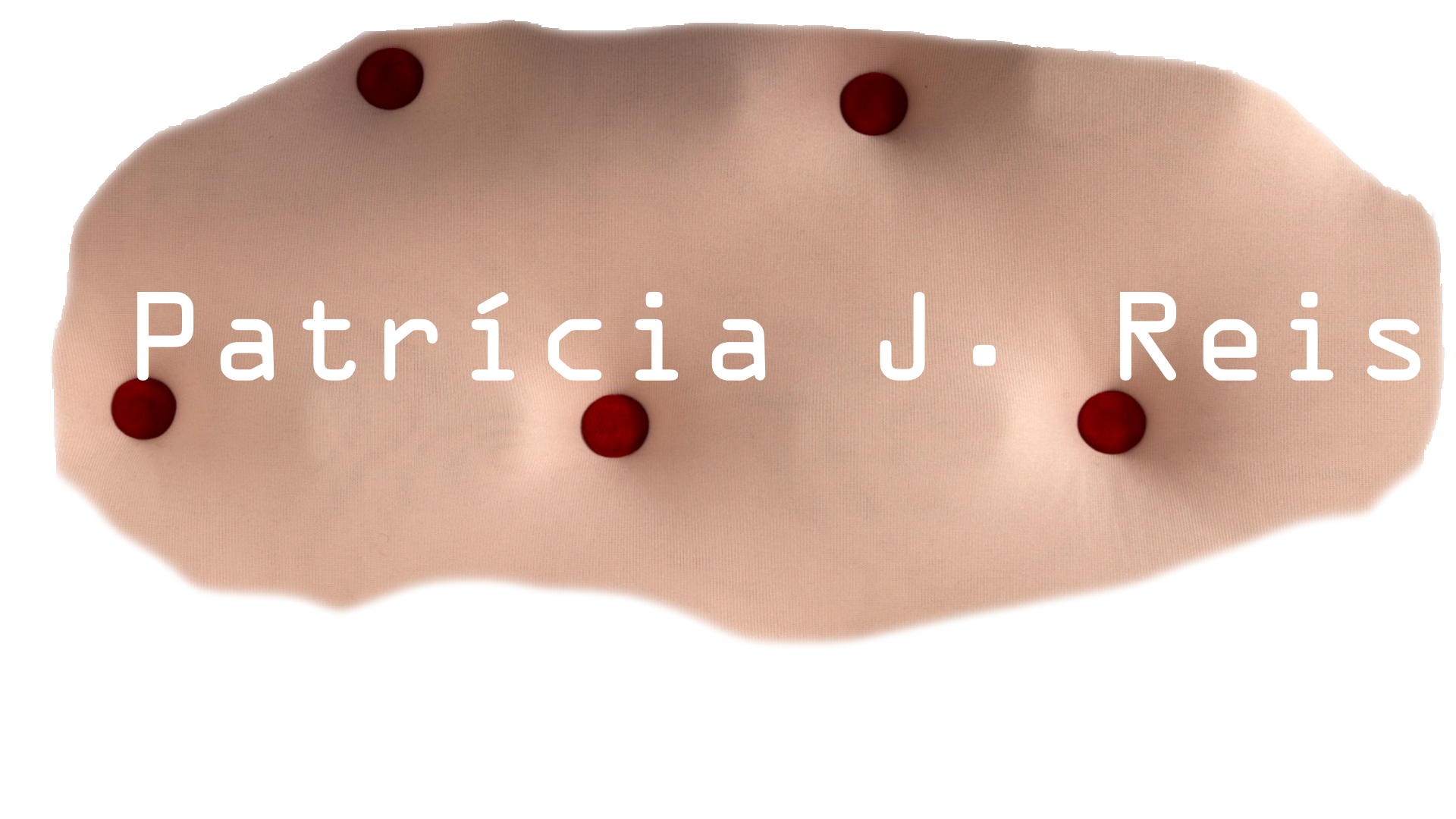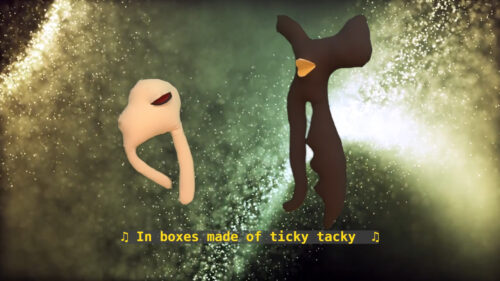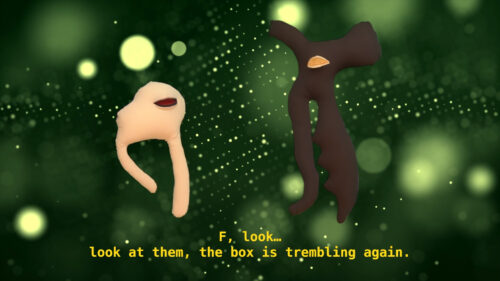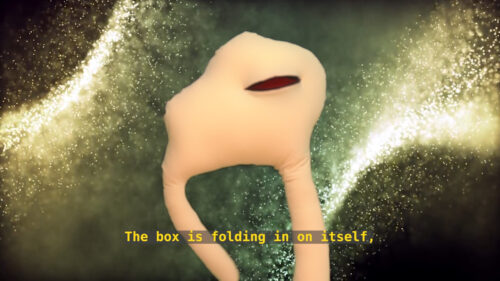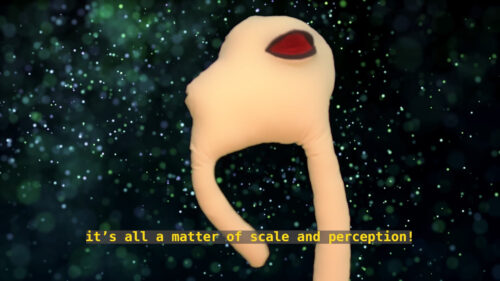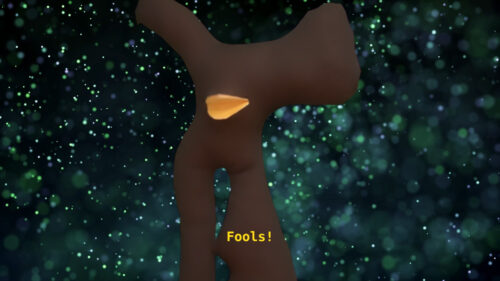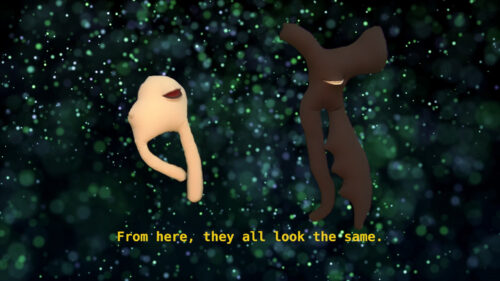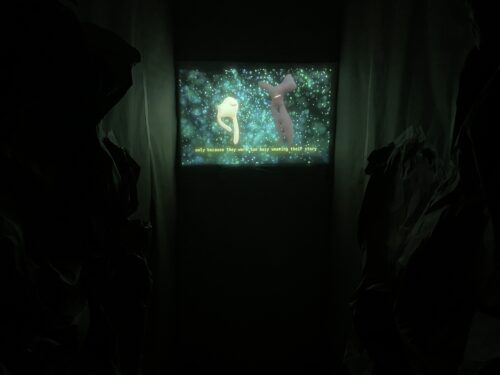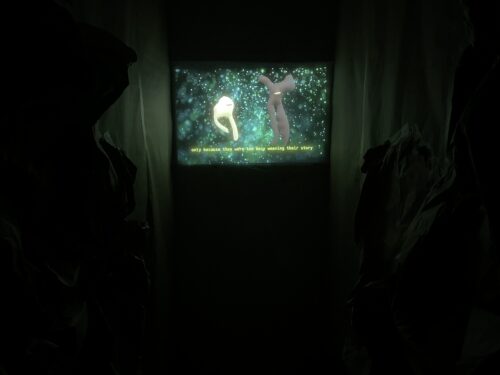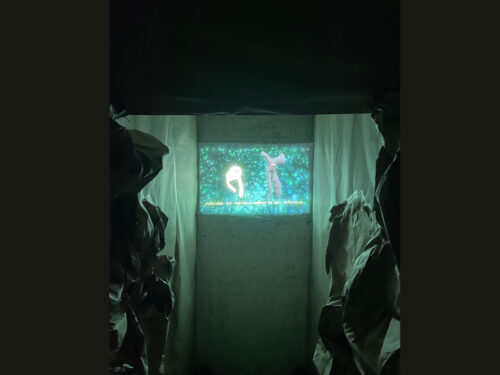The Cosmic Box, 2024
In their site-specific video installation titled The Cosmic Box, artists Patrícia J. Reis and Fernando Mesquita craft a thought-provoking satire that reflects on the human condition, blending dark humor with poignant social critique. Part of the group exhibition Tombola, where the theme and media for each artwork are determined by chance, Reis and Mesquita received the theme “Hope” and the media “Staging.” Their response is a clever subversion of the very notion of hope, offering instead a narrative steeped in pessimism and critique of human existence. The installation occupies a stairwell corridor that leads to a dead-end wall, which the artists have transformed into a tactile and visual journey. Beginning with crumpled craft paper covering the walls, mimicking the texture of a box, the space gradually shifts to smoother paper as one descends. This transition mirrors the video’s thematic progression—a metaphorical shrinking of human potential and possibilities, constrained within the self-imposed limitations of contemporary society. At the far end of the space, a video projection introduces two puppet-like characters, “P” and “F,” who engage in a philosophical dialogue in Portuguese language. Rendered as simple, soft figures made of textiles and foam, their appearance suggests vulnerability and a certain absurdity, immediately drawing the viewer into the satire. Their conversation unfolds over three acts, each set against a background of intergalactic screensavers, evoking the idea of an alien perspective looking down at Earth. The dialogue, developed in collaboration with AI (ChatGPT), takes the viewer on a journey through reflections on human failure, confinement, and misplaced optimism. Central to this dialogue is the critique of humanity’s self-imposed limitations—the "box" that humans have built around themselves, through their social structures, colonial pursuits, and relentless desire for expansion. The aliens, represented by the puppets, view humanity with bemused detachment, observing how humans, despite their aspirations of growth, are trapped within their own shrinking, unsustainable world. The box becomes a metaphor for both the environmental and existential constraints that humans refuse to acknowledge. In the final act, the video’s satire peaks as the two characters sing "Little Boxes" by Malvina Reynolds in Portuguese—a song famously mocking the uniformity and conformism of suburban life. By evoking this song, which criticizes middle-class attitudes and the illusion of individuality, the artists amplify their message: from an alien perspective, all humans, regardless of their personal narratives or societal roles, appear to be following the same self-destructive path. The collapse of their world is inevitable, and hope, as the theme suggests, is nowhere to be found. To deepen the immersive experience, nine vibration motors embedded in the paper walls are triggered at the end of the video, making the space itself tremble, as though the box, this metaphor for human life, is physically shaking—a final gesture of instability and uncertainty. The Cosmic Box offers a sharp commentary on human folly, exposing the fragility of our existence through a deceptively playful medium. By turning the idea of hope on its head, Reis and Mesquita confront us with the sobering reality that, from a distant perspective, human existence may be nothing more than a series of misguided, repetitive actions leading to inevitable collapse.
Video installation composed by: Video projection Full-HD SOUND: STEREO Duration: 8:23m Language: Portuguese Subtitles: English craft paper, vibration motors, microcontroller
- Categories:
- Share Project :



